June 2025
Another Day in Crazyville: America’s Incoherent Tariff Policy
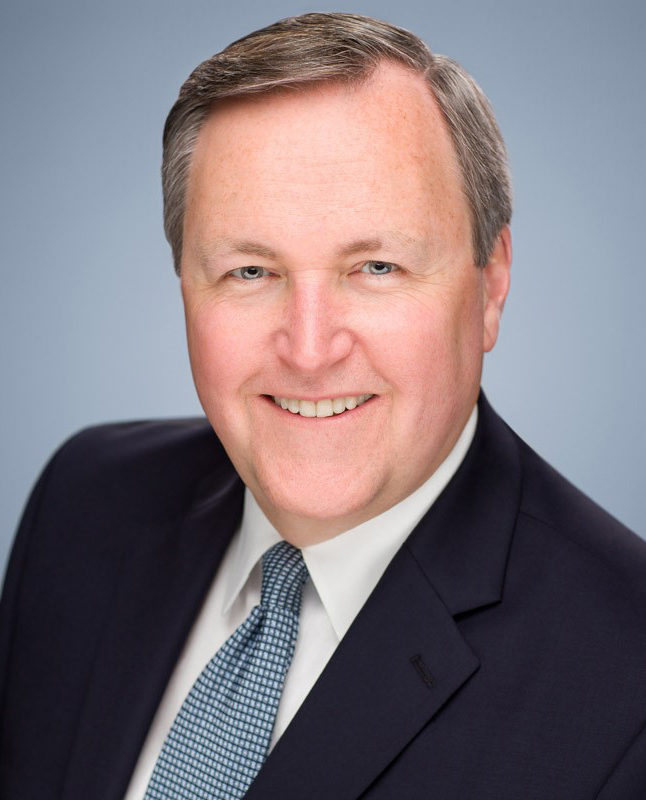 By Kerry Stackpole, FASAE, CAE, PMI CEO/Executive Director
By Kerry Stackpole, FASAE, CAE, PMI CEO/Executive Director
The tariff policy of the United States in recent years has become a prime example of how disjointed economic strategy can yield widespread chaos and confusion—domestically and globally. Intended as a tool to protect American industries and assert geopolitical influence, the policy has instead become a labyrinth of contradictory measures, unpredictable shifts, and retaliatory consequences. You cannot make housing more affordable by adding tariffs to all the electrical, plumbing, building components, and raw materials that go into home building. What should be a coherent framework for guiding trade and bolstering the national economy has devolved into an unstable and often politically motivated strategy that undermines both economic stability and international trust.
At the core of this instability is a lack of consistency. Tariffs have historically been used with clear intent—either to protect fledgling industries or to negotiate better terms in trade agreements. However, recent administrations have used tariffs more erratically, often announcing increases or exclusions without transparent reasoning or long-term strategy, entangling unrelated sectors and escalating costs for American consumers and businesses alike. What begins as a targeted maneuver balloons into a widespread economic strain, with many industries—including plumbing manufacturing—caught in the crossfire.
This unpredictability has bred confusion. As a manufacturer, you scramble to adjust your supply chains with each new tariff announcement, only to be blindsided by sudden exemptions or policy reversals. The result is a volatile business climate that discourages investment and innovation. For small- and medium-sized enterprises, a single tariff shift can make or break operations. In some cases, the combined impact of multiple tariffs—think steel and aluminum tariffs on top of import tariffs—makes walking away from a product line and the jobs it created the only viable option.
On the international stage, America’s incoherent tariff strategy damages its credibility. Allies have been subjected to the same punitive tariffs as adversaries, leading to fractured relationships and retaliatory measures. The imposition of tariffs not only harm consumers but also frays the diplomatic ties necessary for cooperative trade solutions and global stability.
In “The Eurasian Century: Hot Wars, Cold Wars, and the Making of the Modern World,” Hal Brands contends that Eurasia—encompassing most of the world’s population, resources, and industrial capacity—has been the central arena of global power struggles throughout the 20th century and remains so today. He argues that autocratic regimes—from early 20th-century Germany and the Soviet Union to contemporary China, Russia and Iran—have persistently sought dominance over this strategic landmass to reshape the international order. Brands emphasizes that offshore powers like the United States and the United Kingdom have historically acted as balancers to prevent any single power from controlling Eurasia, even as technological advancements and ideological ambitions have intensified these conflicts. As other countries grow wary of the United States’ unpredictability, they are more likely to pivot toward alternative alliances and trading blocs, marginalizing America’s influence.
Tariffs, while often publicly touted as pro-worker and pro-industry, frequently backfire. Jobs may be saved in one sector but lost in another due to rising input costs or foreign retaliation. For instance, while steel manufacturers may benefit from tariffs, auto and construction companies suffer from higher material prices. This creates a political bait-and-switch, where the promised benefits are selectively realized, if at all, and the broader economy absorbs the hidden costs. We are desperately in need of a coherent tariff policy that can tamp down the rapidly emerging economic disarray. Here are five steps to restore coherence and credibility:
Establish a Transparent Tariff Policy Framework
Develop a publicly accessible, rules-based system for evaluating and applying tariffs. Clear criteria—based on economic data, national security concerns, and international trade law—should guide every tariff decision to eliminate arbitrariness and favoritism.
Centralize Trade Policy Under a Coordinated Strategy
Avoid overlapping roles in tariff administration. A centralized trade policy task force coordinating decisions across the Department of Commerce, U.S. Trade Representative, and White House could ensure consistency, accountability, and strategic coherence.
Institute Mandatory Impact Assessments
Before any new tariffs are imposed, independent, publicly available economic impact studies should be required to assess the likely effects on supply chains, consumer prices, and international relationships.
Rebuild International Trade Alliances
We must reengage with allies and multilateral institutions to rebuild trust and credibility. A cooperative approach to resolving trade disputes—rather than unilateral tariffs—will strengthen America’s global standing.
Create a Fair and Auditable Exemption Process
The process for granting tariff exemptions must be established according to objective, published criteria. An independent review board should oversee exemption decisions and provide a public record of approvals and denials to promote fairness and public confidence.
The U.S. needs a pragmatic path forward—one that can restore order to U.S. trade policy and rebuild both domestic and international confidence in America’s economic leadership. It’s not too late to get started.
Respite on Tariffs Offset by Setbacks on Water Efficiency
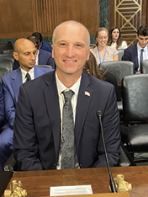 By Ray Valek, PMI Communications Team, Valek and Co.
By Ray Valek, PMI Communications Team, Valek and Co.
Recent agreements between the United States, China and other nations to slash reciprocal tariffs at least until August have offered some respite to plumbing manufacturers concerned about the inflationary impact of these levies. However, a May 9 memorandum from President Donald Trump directed the Department of Energy (DOE) to “consider using all lawful authority to rescind” or amend water and energy standards, giving DOE 60 days to make recommendations to him. The order targets the Energy Policy Act of 1992, which set federal water-efficiency standards still in place today. PMI members can read a PMI Government Affairs alert on this topic (tinyurl.com/56nh7rxs).
These actions take place amid PMI advocacy to roll back the tariffs and protect federal water-efficiency regulations and the Environmental Protection Agency’s WaterSense Program. PMI continues to participate in Americans for Free Trade, a coalition of more than 150 trade associations, to address tariff-related issues and actively lobbies on Capitol Hill and to Trump administration officials in support of free trade. PMI also published five PMI Trade Alerts for members this year (tinyurl.com/r4u3ee2w).
Tariffs have detrimental impact on housing affordability
PMI CEO/Executive Director Kerry Stackpole testified in person before the International Trade Commission in opposition to tariff proposals. “Dozens of plumbing products have been impacted by the tariffs on China and other nations,” he stated. “They continue to serve as a hidden tax on U.S. consumers, hurting domestic producers, retailers, and customers alike, and having a negative impact on the U.S. economy.”
PMI has been emphasizing the damaging impact tariffs have on housing affordability, said Stephanie Salmon, PMI’s Washington, D.C., government affairs consultant. “We’re proposing automatic exclusions for products and inputs not produced here in the U.S. or not readily available from domestic sources. We would like them to establish an exclusion process when tariffs pose significant risks to U.S. employment or housing affordability,” she explained.
Stackpole provided information about the economic impact of the plumbing manufacturing industry to Bloomberg Opinion that served as the basis for an editorial titled “The trade war is coming for your plumbing” (tinyurl.com/yrfvdr62). The editorial described how a global trade war would raise the costs of building a home, using the plumbing manufacturing industry to exemplify how damaging a trade war can be. Plumbing contributes about 8% to the cost of building a home.
“Plumbing manufacturers may not have the political cachet of tech companies or automakers,” Bloomberg writes. “But they employ more than 200,000 people in 41 states and account for $13 billion in wages. (And much more when accounting for associated suppliers and retailers.) They’re an essential element of the homebuilding industry. And, like many manufacturers, they’ve built intricate global supply chains that push down prices thanks to the wonders of comparative advantage.
“Surveys show that manufacturers, homebuilders and other business leaders—the supposed beneficiaries of this policy—overwhelmingly oppose the new tariffs. Consumers likewise hate the idea. . . No one wins a trade war.”
Trump memo proposes a rollback of water-efficiency rules
The Trump memorandum makes the specious claim that water-efficiency rules have made kitchen and bathroom products less effective and more expensive, despite evidence summarized in recent articles published in Slate magazine (tinyurl.com/4mt2pjbr) and Consumer Reports (tinyurl.com/38arua9h). Both articles attest to the ability of water-efficient plumbing products to save water and energy without compromising performance. Slate writer Anna Gibbs sums it up: “The evolution of the toilet is a success story that, against all odds, has brought us an efficient, affordable, and high-performing consumer good. And it’s hard to flush that kind of progress away.”
In addition, studies show that the federal law for water-efficient appliances has been the leading reason for declines in household water use. Efficiency improvements are why many large U.S. cities use less water than they did decades ago, despite population increases, according to Circle of Blue. In addition, most buyers of water-efficient products express high satisfaction with the products’ performance and water savings, according to product ratings in online marketplaces.
On a positive note, Salmon said the Water Sense Program is included in the federal budget currently being developed in Congress. She and Stackpole have been in close contact with the WaterSense staff and met along with several representatives from PMI member companies with EPA Office of Water staff, discussing topics including water reuse, reverse osmosis systems, lead, PFAS, and leak detection systems, in addition to WaterSense.
PMI’s advocacy/government affairs effort continues to advocate for federal investment in plumbing research, and for the exemption of rebates for the purchase of water-efficient products from taxable income through the passing of the Water Conservation Rebate Tax Parity Act. Also Moen’s executive vice president of product development Aaron Bores recently testified to the U.S. Senate Subcommittee on Intellectual Property on the prevalence of counterfeit plumbing products. Later that day, the U.S. Consumer Product Safety Commission recalled four Chinese-made faucets for failing to meet national drinking water standards for lead or organic compounds including carcinogens.
CEC Shares Positive News During PMI Legislative Forum
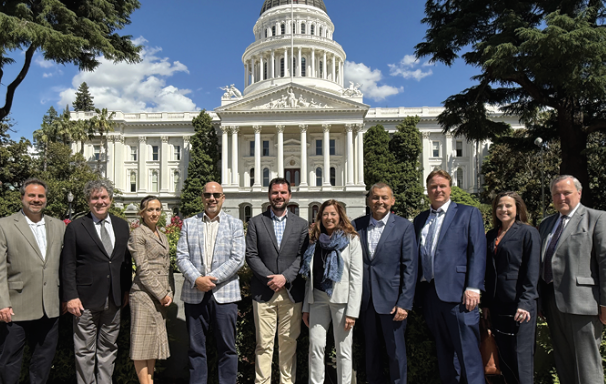 By Judy Wohlt, PMI Communications Team, Valek and Co.
By Judy Wohlt, PMI Communications Team, Valek and Co.
The California Energy Commission (CEC) is taking more time to study issues Plumbing Manufacturers International has raised on the CEC’s proposal to further lower maximum toilet flush volumes in the state. A PMI team discussed these new developments in meetings with the CEC and other policymakers during the PMI California Legislative Forum and Fly-in, May 12-13, in Sacramento.
“This good outcome is part of our continuing dialogue with the CEC,” said Jerry Desmond, PMI’s California government affairs consultant. PMI is encouraged by the commission’s collaborative approach. The CEC has reached out to PMI members and other stakeholders, considered all the data PMI has presented, and agreed to coordinate with California Title 24 building codes and Title 20 appliance efficiency codes, he added.
PMI is engaged with the CEC on its current Docket 22-AAER-05, in which preliminary drafts to obtain increased water and energy savings presented several options, including mandatory dual flush toilets. The docket also contains a proposal to reduce maximum flush volumes to 1.1 gallons per flush (gpf) for single-flush toilets and 1.28 gpf/0.8 gpf for dual-flush models. PMI has significant concerns regarding the potential unintended consequences of lower flush volumes. Top concerns involve water aging and stagnation in distribution and premise plumbing systems that can lead to pathogen growth, drainline carry issues in sewer systems, and complications with wastewater treatment.
PMI again presented the CEC with a practical alternative strategy to replace California’s legacy toilets that use over 3.5 gpf with models that meet the existing 1.28 gpf standard, as proposed by PMI’s Rethink Water initiative. The state will also benefit from conducting field studies to assess the impact of lower flush volumes and educating the public on the benefits of adopting compliant fixtures—while providing rebates to encourage participation, the PMI team recommended.
“These proposed changes are a big deal to Kohler. We’ve been working with PMI to make sure our concerns are addressed,” said first-time attendee Dan Rieland, manager of codes and standards at PMI member company Kohler.
The value of face time
PMI members say they appreciate the forum’s many benefits, which help them better understand how policies get created and provide face time with government agencies with which they can share their companies’ plumbing manufacturing experience and challenges.
“What was beneficial to me was meeting directly with some of the agencies amid pre-rulemaking when we can influence what they’re considering,” Rieland stated. “I got a ton of value from hearing the Building Standards Commission’s perspective and how their conversations are going with the CEC and then understanding straight from the agencies about how they’re going to partner with other agencies. It was a unique perspective.”
He noted that the event was well-organized and impactful. “Participation from PMI staff was top-notch as they navigated the whole day and brought it together. PMI and Jerry Desmond always made sure the manufacturers’ voices were heard,” he added.
Other PMI members who visited policymakers were Troy Benavidez, leader, international government relations, LIXIL; Cambria McLeod, vice president of industry relations and business development, IAPMO; Belinda Wise, president of the PMI Board of Directors and Neoperl US board member; and David Yow, director of government relations, IAPMO. Attending from the PMI staff were CEO/Executive Director Kerry Stackpole, Director of Programs and Administration Jodi Stuhrberg, Technical Director Kyle Thompson, and Director of State Government Affairs, Policy and Advocacy Matthew Windrum.
Federal announcement adds uncertainty to California’s standards
Days before the forum, the Trump administration signed a memorandum directing the Department of Energy to consider rescinding water-efficiency rules. The PMI team discussed this action and its implications for California’s standards with forum attendees, the CEC, and other policymakers.
The president’s memorandum directs the department to consider reviewing and rescinding—or reverting to the minimum standards required by statute—rules that limit water use in showerheads, faucets, toilets, urinals, dishwashers, and washing machines. The memo also directs the department to pause enforcement of the rules. The Federal Register published a notice clarifying the scope of federal preemption of state rules for water use in showerheads, faucets, toilets, and urinals. While the ultimate outcome, timeframe and impact in the state will depend on several factors, PMI confirmed that state regulators are aware of this new development, Desmond said.
Award-Winning Filmmaker to Headline PMI25 in Lively Chicago
 By Judy Wohlt, PMI Communications Team, Valek and Co.
By Judy Wohlt, PMI Communications Team, Valek and Co.
Set against the Windy City’s iconic architecture and vibrant culture, the PMI25 Manufacturing Success Conference, Nov. 3-6, will present engaging learning experiences from inspirational speakers, fun networking opportunities, and a chance to explore Chi-town.
Don’t miss the Nov. 4 keynote address by Brett Culp, an award-winning documentary filmmaker and founder of the not-for-profit, The Rising Heroes Project. Known for his films “Legends of the Knight” and “Look to the Sky,” Culp explores the power of heroic stories and inspiring individuals that lead toward a better tomorrow.
This year’s conference will take place in the heart of Chicago at the luxurious Fairmont Chicago Millennium Park—close to Millennium and Grant Parks, upscale shopping on Michigan Avenue, and the city’s scenic Riverwalk. Enjoy a relaxing massage at the hotel’s Leaf Spa, fit in a workout at the fitness center, and visit the concierge for expert recommendations on local attractions. Savor a meal with bold Central and South American flavors made by critically acclaimed Chef Richard Sandoval at Toro, a Latin restaurant offering a bespoke dining experience at the hotel.
Sharing uplifting stories and a surprise for PMI members
Culp will share with PMI25 attendees uplifting stories from his filmmaking adventures to provide insights on leadership, innovation and empowerment—along with a surprise sure to delight Plumbing Manufacturers International members. He has described real leadership as “inviting people on a mission to do something extraordinary together.”
His high-energy presentations are filled with touching moments, extraordinary filmmaking stories, humor, and insights about developing rewarding relationships through generosity and authenticity. “His message impacts audiences on a personal level, motivating them to find the best within themselves and bring it to their world,” stated his website.
Using a unique, collaborative approach to his projects, Culp gets diverse groups of people talking, which ultimately leads to stronger communities and a greater impact. He has developed expertise in creating “mini-movements” that inspire the heroic spirit in everyone.
Culp’s latest film, “A Voice That Carries,” follows the relationships between fathers and daughters and is featured with his other films on Netflix, iTunes, Hulu, and other top digital platforms.
Enjoy fun, food and unique activities
A visit to Chicago offers many fun and unique experiences, whether enjoying a superb meal at Gibsons Bar & Steakhouse, admiring beautiful lakefront views while strolling on Navy Pier, or exploring world-renowned art and culture at the Art Institute of Chicago.
Get panoramic views of the striking Chicago skyline and Lake Michigan from 1,030 feet above the famous Magnificent Mile by visiting the 360 CHICAGO Observation Deck on the 94th floor of the John Hancock building. For the adventurous, take in the skyline views offered by TILT Chicago in a steel and glass box that slowly rotates outward for a take-your-breath-away experience.
Iconic Cloud Gate, also known as “The Bean,” is a must-see sculpture in Millennium Park and one of the world’s largest permanent outdoor art installations. The city is also home to the Griffin Museum of Science and Industry, which houses more than 35,000 artifacts and hundreds of exhibits, including a WWII German u-boat, a working coal mine, and a 40-foot tornado. Or, explore the Field Museum and its ancient Egypt exhibit featuring a re-creation of a 5,000-year-old tomb of a pharaoh’s son.
While Chicago is well-known for its deep-dish pizza at local favorites such as Gino’s East and Pizzerias Uno and Due, the city has become a foodie’s dream destination for fine dining. Alinea, a Michelin three-star rated restaurant in the city’s Lincoln Park neighborhood, serves modernist cuisine with a theatrical flair. The “Painted Desert” course, a favorite dessert experience, involves chefs creating edible art on a table using various sauces and sweets. Near Millennium Park, the Gage is another city hotspot, offering gastronomic delights including chicken fried lobster, lamb vindaloo, fried pickles, and whisky-braised pork poutine.
Accounting Expert Shares Basics of a P&L Statement
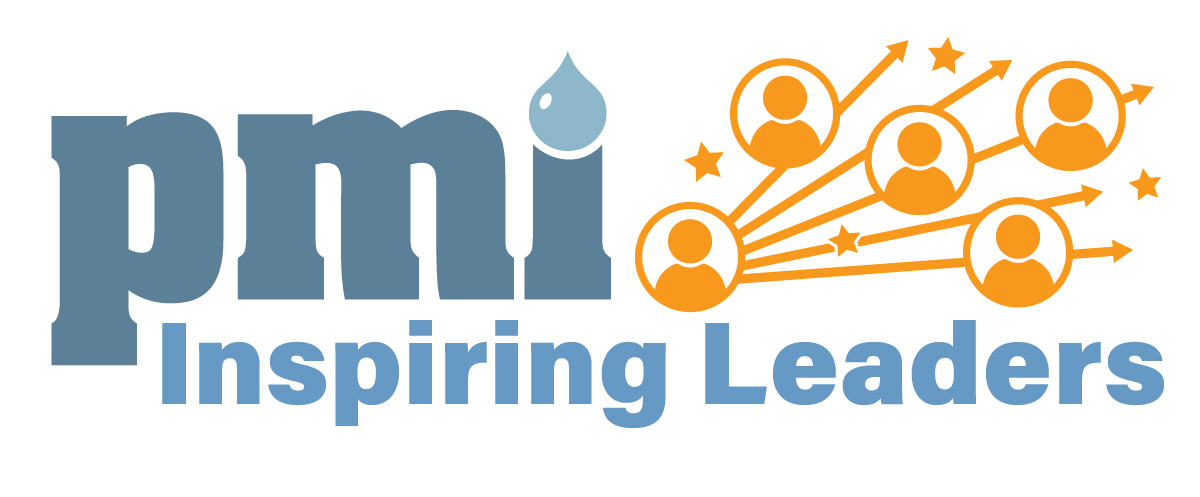
By Judy Wohlt, PMI Communications Team, Valek and Co.
Your company’s profit and loss (P&L) statement tells the story of your business and is crucial to strategic planning and making decisions that enhance business growth, Shannon Jenkins, a certified public accountant, explained during a recent Plumbing Manufacturers International Inspiring Leaders Workshop, “Mastering Profitability for the Non-Financial Manager – A Guide to Profit and Loss Statement Proficiency.”
She defined a P&L statement as a summary of revenues and expenses, reflecting a business’s financial performance over time. “It’s the primary tool to determine profitability,” Jenkins told a large group of PMI members. “It is historical, and a lot of times accounting gets a bad rap because it’s a rear-view mirror picture. But if you’re doing it right, you’re using it in a more proactive, strategic way.”
Grasping the key components of a P&L statement—revenue, cost of goods sold (COGS), gross profit, operating expenses, and net profit—will provide a foundation to help understand critical issues in your business that may require changes, she noted. For example, she asked, “How often do we see revenue increase on the P&L, however, profit decreases? When that happens, do we know why? What are we doing about it?”
Identifying trends and red flags
Jenkins, partner and senior business advisor at Cerity Partners, shared how to manage a P&L statement to identify trends and red flags and avoid common pitfalls. Sudden spikes in expenses and inconsistent revenue can be indicators of underlying financial issues.
She suggested using a trend analysis to review predictable and unpredictable operating expenses. A trend analysis looks at fluctuations over time to recognize patterns and typically means looking back over 12 months. For example, office rent is a predictable, fixed expense. Unless you’ve signed a new lease, rent should be the same amount every month, she explained. “We don’t have as much control over fixed expenses.” On the other hand, repairs and maintenance are unpredictable or variable expenses.
Salary costs and employee compensation, while generally predictable, can be tricky. For example, Jenkins discussed a client with an engineering team that kept incurring high overtime costs. “We looked at the labor trend analysis over a year and what was going on from a production volume. We found it was a scheduling issue, not a staffing issue,” she said. “So, you kind of have to think outside the box a little bit when looking at the P&L.”
Seasonality in a business can cause revenue peaks and valleys, Jenkins noted. “If you’re in a cyclical business where you’ve got larger seasons than others, how are you projecting that out so that you can have cash flow through those slower seasons? You need to get ahead of that, using your P&L from a strategic level,” she added.
Creating accountability
Managers can use their P&L statement to create accountability within their teams.
She suggested that large companies create leadership at each level of the P&L statement. For example, a chief marketing officer or sales vice president can own the sales and marketing P&L portion of the statement while the chief technology officer or an operations lead can own the technology P&L. “Do your leaders have accountability? Do you have accountability? How is performance measured? This goes back to knowing what your target is and why that’s important so that you can measure against it,” she added.
The frequency of creating accountability is critical, too. “I see a lot of companies that don’t dig into the whys of their costs, other than when they do the budget once a year,” Jenkins stated. “Pay attention to it month to month, which makes everyone more accountable.”
For hands-on learning, she provided a worksheet to help participants calculate revenue and gross and net profit, assess revenue performance, spot opportunities for improvement, and develop an action plan to improve their company’s financial health. She encouraged beginners in the group to contact her with questions or for help.
PMI members can view Jenkins’ PMI Inspiring Leaders Workshop slides and the workshop worksheet on the PMI webinars and videos webpage under “workforce/professional development” (bit.ly/42DvK4p).
PMI Webinar: How to Use AI With Eyes Wide Open
 Are you ready to dive deep into the world of AI? Don’t miss this exciting opportunity to learn from one of the leading experts in the field. Join us for the “Eyes Wide Open—Developing a Mindful Understanding of AI Today” webinar, led by Sam Ransbotham, Ph.D. This June 26, 12 p.m. CT, event is free for all employees of PMI member companies—your membership gives you access to this valuable session.
Are you ready to dive deep into the world of AI? Don’t miss this exciting opportunity to learn from one of the leading experts in the field. Join us for the “Eyes Wide Open—Developing a Mindful Understanding of AI Today” webinar, led by Sam Ransbotham, Ph.D. This June 26, 12 p.m. CT, event is free for all employees of PMI member companies—your membership gives you access to this valuable session.
Why attend?
AI is transforming industries at lightning speed, but with that transformation comes questions, concerns and confusion. During this insightful session, Dr. Ransbotham will help you understand the true potential of AI—as well as the challenges it presents. This is your chance to learn directly from someone who’s at the forefront of AI research, and who will offer a balanced, mindful perspective on how businesses can harness the power of AI responsibly.
Key takeaways
- Gain foundational knowledge of AI, machine learning (ML), deep learning (DL), and Generative AI (GenAI).
- Discover AI’s advantages when used responsibly and how to leverage it to your advantage.
- Learn to identify potential risks in AI technologies, ensuring their responsible and ethical use.
- Enhance the accuracy of your AI tools and improve decision-making.
Questions we’ll answer
- How can we start learning more about AI and its applications today?
- What are real-world examples of companies successfully using AI?
- What steps can we take to promote the positive use of AI while minimizing risks?
As AI continues to reshape the future of work—especially in areas once thought to be entirely human—this webinar will help you stay ahead of the curve. Will AI lead to more efficient work, or could it create more challenges like job displacement, misinformation or bias? We’ll discuss these pressing questions and more. Reserve your spot today at tinyurl.com/5ay4ucjy.
About our speaker
Dr. Ransbotham is an expert in AI and analytics, a professor at Boston College, and the guest editor for MIT Sloan Management Review’s Artificial Intelligence and Business Strategy initiative. He also is the co-host of the “Me, Myself and AI” podcast. With his extensive background in both business and technology, Dr. Ransbotham brings a rich, balanced perspective to the conversation around AI’s role in the future of work.
Women of PMI: The Tao of Self-Confidence
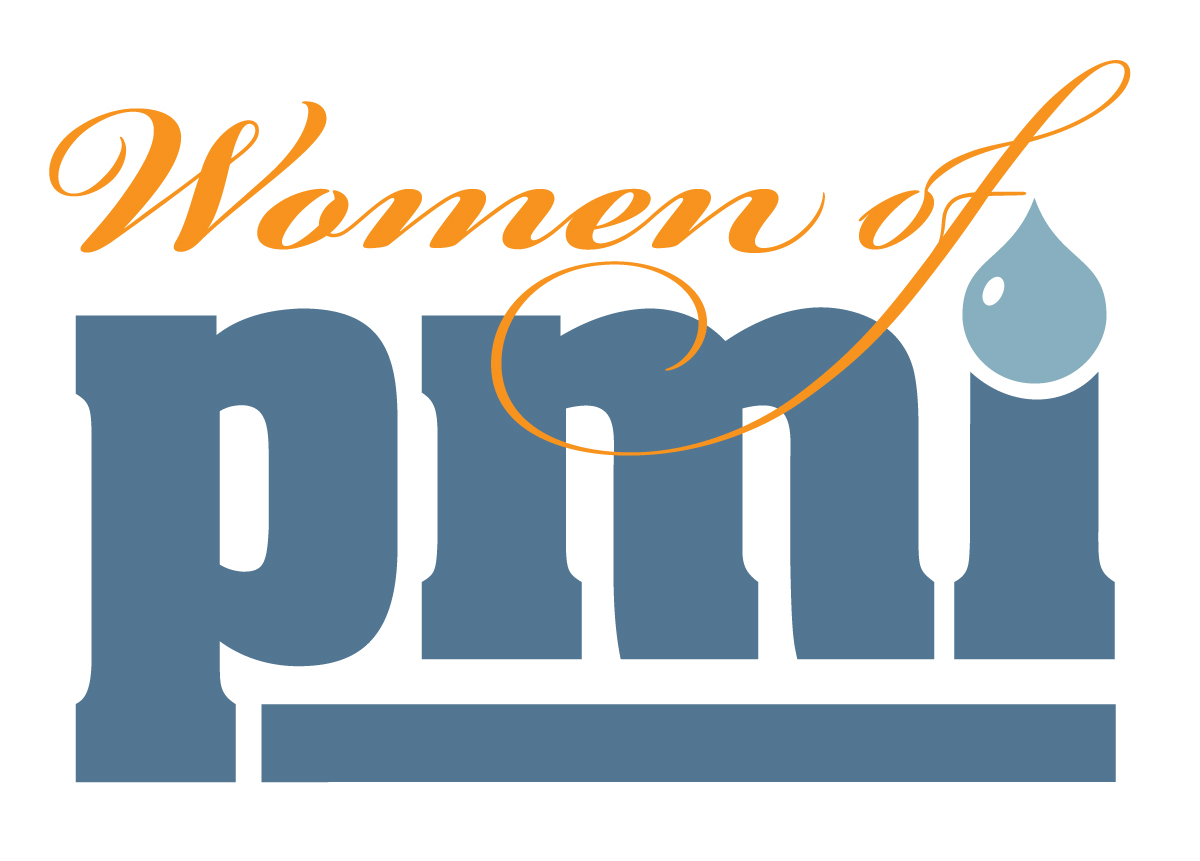 What if self-confidence could be the key to unlocking your true career potential? On July 16, 1-2 p.m. CT, join best-selling author and acclaimed speaker Sheena Yap Chan for a transformative one-hour virtual program, “Women Breaking the Mold: Building Confidence in an Ever-Changing Landscape,” where she’ll share proven strategies for building the confidence you need to thrive in your career and beyond.
What if self-confidence could be the key to unlocking your true career potential? On July 16, 1-2 p.m. CT, join best-selling author and acclaimed speaker Sheena Yap Chan for a transformative one-hour virtual program, “Women Breaking the Mold: Building Confidence in an Ever-Changing Landscape,” where she’ll share proven strategies for building the confidence you need to thrive in your career and beyond.
All women of PMI member companies are invited to participate in this complimentary event—thanks to your company’s PMI membership. Register to receive a copy of Yap Chan’s newly released book, “Bridging the Confidence Gap: How Empowered Women Change the World.” Supplies are limited so register today!
Why attend?
Yap Chan will guide you through practical tools and techniques to overcome self-doubt, embrace your unique strengths, and rise as a confident leader—both in the workplace and in your personal life. Confidence is one of the most powerful tools you can wield. Yet, women often face societal pressures and internal doubts that undermine their leadership. Yap Chan will help you:
- Understand how the “confidence gap” affects career advancement
- Learn how to advocate for yourself effectively, in meetings, negotiations, and everyday interactions
- Discover how confident leadership can transform company culture from the ground up
- Build long-lasting strategies for mentorship, allyship, and success in environments where women are underrepresented
Register at tinyurl.com/3x6pbuux.
PMI Market Outlook LIVE Presents Encouraging Economic Data
 By Ray Valek, PMI Communications Team, Valek and Co.
By Ray Valek, PMI Communications Team, Valek and Co.
“To say that the first quarter has been full of challenges would be the great understatement of the day,” said PMI CEO/Executive Director Kerry Stackpole in his introduction to the May 21 PMI Market Outlook LIVE. In the presentation that followed, ITR Economics’ Connor Lokar presented encouraging data while acknowledging the frustration caused by challenges such as tariffs and other economic factors.
As the plumbing manufacturing industry continues to turn over inventory and recover from the 2022-23 housing and 2023-24 manufacturing recessions, ITR Economics is not forecasting a macroeconomic recession, instead expecting a modest growth rate in 2025 extending into 2026, Lokar said. He said tariffs are only one of many factors restricting robust growth, with higher inflation, interest rates, and mortgage rates among the others.
Tariff situation causes uncertainty
Because the tariffs are being implemented in what Lokar described as a “haphazard manner,” they have created uncertainty among businesses and their customers; they don’t know what will happen next. “Uncertainty is something that doesn’t lend itself extremely well to growth, to capital expenditure, or to confident business decision making,” Lokar explained. “A lot of folks, right or wrong, feel that the safest thing to do right now is nothing. To conserve cash, to pull back on their budgets, to delay capital spending, to scrutinize spending. . . The lack of clarity and consistency on these tariff rates is one of the biggest problems that we’re dealing with right now.”
The tariffs were prompted by concern within the Trump administration about the trade deficit. While headlines scream about the $1.4 trillion trade deficit, the largest in United States history, Lokar said the trade deficit as a percentage of gross domestic product (GDP) has improved from where it was 20 years ago. “On a nominal dollar basis, our trade imbalance has never been larger. But our entire economy has also never been larger. The framing is that we can’t live with a trade deficit, that we cannot grow our economy with a trade deficit. But our very existence economically, at least from a GDP standpoint over the last 50, 60 years says we can grow through these deficits because we have grown through these deficits,” he stated.
“But there may be a method to the madness,” he continued. Because the world economy is not growing strongly right now, “there may be increased appetites to get together and strike deals. We’ll have to see how that plays out.”
Tariffs will bring in relatively small amounts of revenue
Lokar said the math of tariffs funding the government and reducing taxes doesn’t work. He said the U.S. is currently getting $78 billion in tariff revenue while the federal government is spending about $7 trillion annually. “Let’s say the tariffs bring in $250 billion, three times more. But even if it’s a quarter trillion dollars, that would only fund the government for a week and half, or two weeks (a year),” he explained.
As always, Lokar said ITR Economics follows the philosophy that government spending and intervention in free markets are generally counterproductive. “Whether it’s trade policy or otherwise, our view, and the data supports us here, is that the more the government intervenes, the less efficient outcomes and the more unintended negative outcomes we ultimately get,” he stated.
Lokar also said he doesn’t believe tariffs will create onshoring incentives for companies. First, the U.S. doesn’t have the labor force to work in new manufacturing facilities, he explained, citing a half million unfilled manufacturing jobs in the U.S. right now. Second, he said the manner in which tariffs were implemented do not provide the necessary clarity companies need. “They need to know what the tariff rates are going to be and where they’re going to stay before they could responsibly even consider the idea of onshoring,” he emphasized.
Be U.S.-centric
However, with China in decline with significant economic challenges compounded by demographic decline and with the winds of nationalism blowing strong in the U.S., Lokar advised companies to be “U.S.-centric.” In a new era of shortened and diversified supply chains, the U.S. is the center of gravity, he said.
After running through data showing a stable Weekly Economic Index over time; rising inflation-adjusted wages; and accelerating growth in residential housing, plumbing product sales, and retail sales, Lokar was critical of negative economic narratives often seen in the media. “They’re not reality,” he emphasized. “There’s an old joke that economists have called nine of the last five recessions,” the University of Michigan graduate said before saying that the University of Michigan Consumer Sentiment Index has “called about 20 of the last two recessions.” He emphasized that the index’s data are not reflective of the consumer purchasing data he is seeing.
Lokar encouraged PMI members to access three resources: Fed Watch on youtube.com/@ITREconomics, “Financial Resilience: Your Blueprint to the 2030s” (tinyurl.com/2vck529a), and the services of Dan Swartz (tinyurl.com/8nywy7ee), a colleague who specializes in tariff mitigation strategies.
PMI members can view Lokar’s presentation and slide presentation at tinyurl.com/2jxetbu4.
